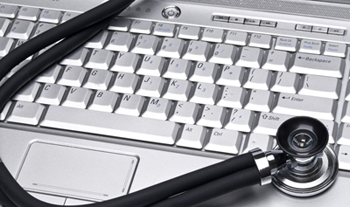Good patient record notes are necessary for proper record-keeping, communicating with other providers, billing and reimbursement, and medico-legal purposes. Medical transcription outsourcing is a viable strategy to convert recorded physician’s dictated notes into text format for inclusion in the electronic health record (EHR). However, the quality of patient record notes depends on the physician. Adhering to best practices improves the quality and efficiency of notes that physicians create about their patients, according to a recent study led by UCLA researchers. Here are the key considerations that shape good note-taking by physicians.

- Use SOAP format: The traditional Subjective, Objective, Assessment, and Plan (SOAP) note documentation format is the most common method of clinical note-taking. EHRs incorporate SOAP methodology which must be followed sequentially to make the patient note. Received from the patient, the initial subjective portion includes history of illnesses, surgical history, current medications and allergies. Next, the physician fills in the objective portion with vital signs and measurements, abnormalities in any, and results of physical examinations and previous laboratory and diagnostic tests. The assessment component includes the diagnosis of the patient’s condition based on the medical history and objective data. The final portion is the plan, referring to what the physician will do to treat the patient’s concerns and goal of the therapy. This section includes lab orders, radiological work, referrals, procedures performed, medications given, and education provided. It will also include a note of what was discussed or advised as well as timings for further patient review or follow-up.
- Balance note-taking styles: Most physicians’ notes combine the narrative style and the bullet-point/checklist style. A www.psychiatrictimes.com report points out that an ideal clinical note is one that balances both these styles. The narrative style is ideal to provide a meaningful account of the history of present illness as well as the patient’s present condition. While providing a clear picture, the narrative style can be lengthy and time consuming. The bullet point format overcomes this problem as it provides a concise list of the relevant information and symptoms. In fact, in electronic medical records (EMRs), much of the note is in bullet-point format. While it is efficient and time-saving and helps billing, checklists tend to generalize the nature of symptoms.
- Be organized: This is especially important for junior residents taking notes. Patients may not be organized when discussing their symptoms or condition. That’s why it’s important to conduct the interview in an organized manner. The best strategy is to listen carefully and note down the points in the relevant section of the history. Rather than start with the present illness, Psychiatry Times recommends beginning the interview with past psychiatry history or social history.
- Keep a log of every patient outside of the medical record: An article published by the AMA Journal of Ethics says that note-taking by residents can benefit from telling patients’ stories in places other than the medical record. This is especially useful in the emergency room. The log should include the patient’s initials, gender, date seen, and chief complaint or diagnosis as well as any procedure performed, and other information. When captured correctly, a specific component of the interaction could help jog the physician’s memory about the entire encounter, according to the report.
- Record only pertinent information: Only relevant information with diagnostic and prognostic utility should be included in the clinical documentation. Information that does not impact treatment or disposition would not serve any purpose. To avoid EHR note bloat, the focus should be patient-centric rather than documentation-centric.
- Be brief: Brevity is an essential quality when it comes to EMR notes. Including non-relevant review of symptoms, family, social, environmental, extensively documented physical, etc. can bury the essential patient information in the note. Moreover, busy clinicians would find it extremely taxing to read through lengthy notes and even ignore notes that are too long. Physicians should practice making short snippets that can communicate the relevant information for documentation.
Other tips for effective clinical note-taking:
- Use brief patient quotes as needed
- Document to maintain the standard of care
- Discuss and document the risks and benefits of a proposed treatment with the patient
- Note down the justification for medication changes
- Use specifiers when writing diagnoses
- Maintain documentation consistency by ensuring that the diagnosis, assessment, and treatment plan should support each other
- Avoid excessive copy-paste
- Organize the notes before signing them
- Avoid being vague especially when documenting initial evaluation of symptoms
- Avoid being judgmental and keep in mind the possible reader audiences for the record when writing the record
The ULCA study found that the quality of progress notes improved significantly when physicians were prompted to document only what is relevant for that day and limit the use of EHR “efficiency tools” such as copying-forward and autofill. Being mindful about note-taking best practices can overcome many of the challenges associated with creating patient record notes. When it comes to transcribing and charting patient’s medical history, diagnosis, treatment and care in the EHR, the support of an experienced medical transcription company can prove invaluable for time-strapped clinicians.


